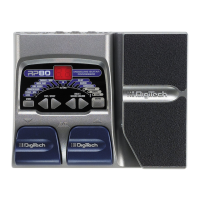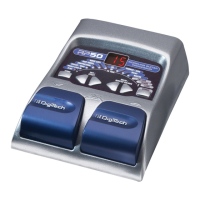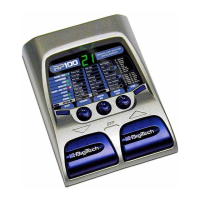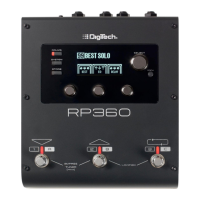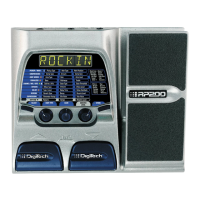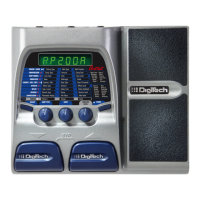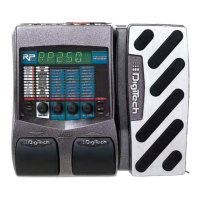Guitar Signal Routing
The guitar signal is routed from the input through the RPx400s effects processing and then to the pairs of
outputs. The signal sent up USB can be tapped off either at the input (USB Send Path A), or at the end
of the effects chain (USB Send Path C). Signals recorded from USB Send Path A can be played back
later through the RPx400 for re-amping. See Re-Amping a Guitar Track on page 32 for more information
on how this feature works.
Guitar USB Source Mapping
The guitar signal has two paths in which it can travel up the USB port to the computer. Path A taps the
guitar signal off right at the input and sends unprocessed signal up to the USB port. Path C taps the gui-
tar signal at the output of the RPx400 and can include any effects processing that may be used. Below is
a matrix to show where the signal is tapped based on how the Mic, USB 1-2 Source, and USB 3-4
Source settings are configured.
Mic Signal Routing
The mic signal can be routed in different ways through the RPx400. micoff disables the mic input from
being heard but dry mic signal can still be recorded. micdry routes the mic signal around the RPx400’s
effects processing and mixes it in at the outputs.
micrvb routes the mic signal only through the RPx400
Delay and Reverb modules.
micfx routes the mic signal through all of the RPx400’s effects.
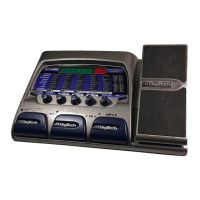
